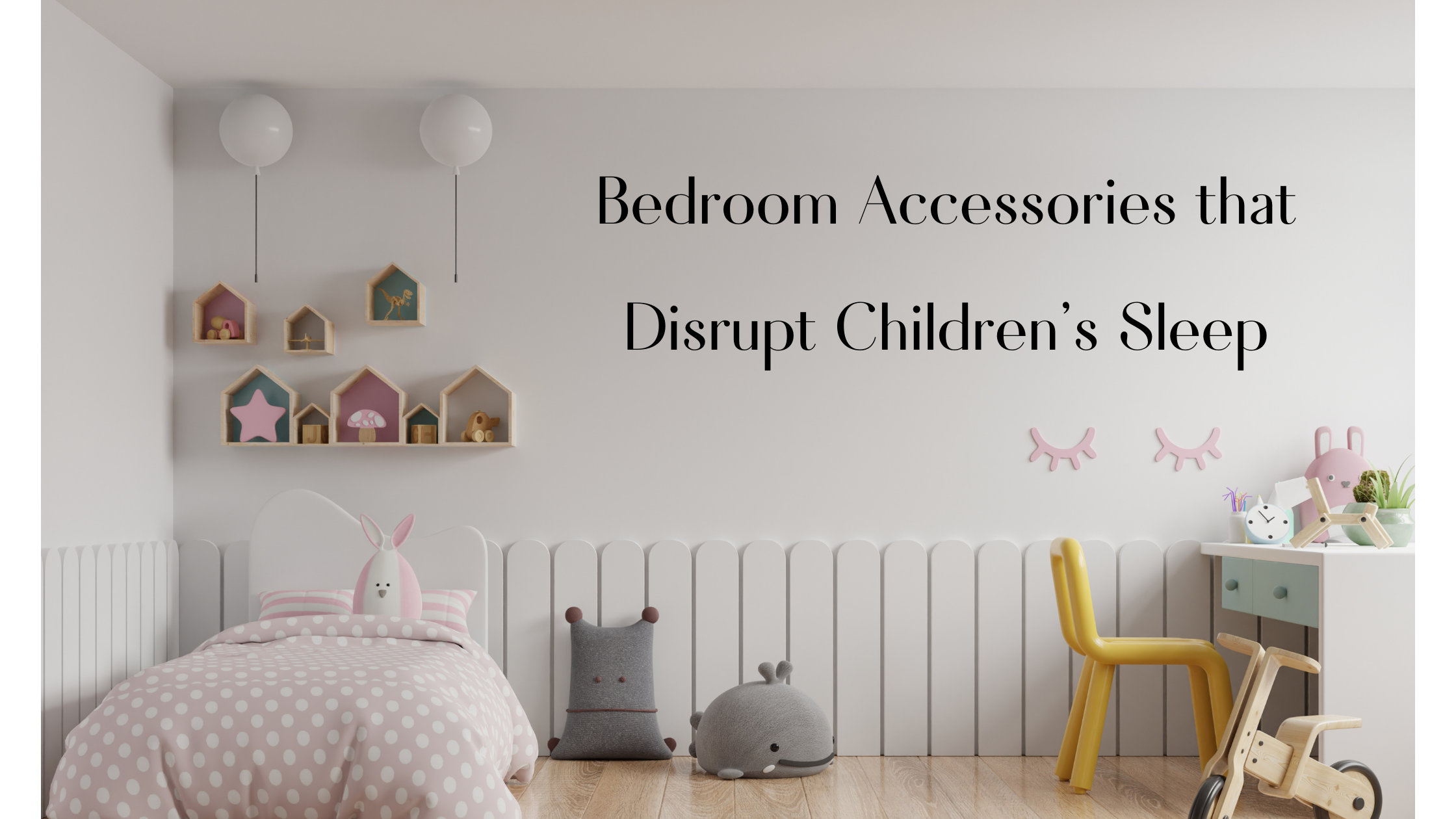
When trying to figure out how to improve your child's sleep, it's important to consider all aspects of their lives, as they can all have a negative or positive impact on sleep. One aspect that we may not think about much is our child's sleeping environment.
Their bedroom is more than just a playroom. It's the place where they are getting the most rest. If you would like to transition your child to their own room, or work on how to keep them in their own bed throughout the night, then it's important to create a bedroom environment that fosters improved sleep. This article will talk about bedroom accessories that disrupt children's sleep and what you can do instead.
Nightlights
Nightlights are almost required in children's bedroom as they are normally afraid of the dark. The little light plugged into the wall or sitting on your child's bedside table may help them feel more comfortable, but could also be ruining their sleep.
The optimal sleep environment is cold, dark and quiet. A nightlight disrupts that which can cause increased disruptions. But what's the solution? They won't even go in their room if it's too dark, right?
Practice other techniques that offer a bit of light that will eventually go off. Maybe you have a nightlight that is on a timer. Or perhaps, you leave the door cracked and the hallway light on, and when they fall asleep and everyone is in their rooms, you can turn it off. Find ways to introduce a little bit of light to help calm anxieties without disrupting their sleep.
Bright Room Colors
Your child's room may be bright and full of toys and other vibrant objects to encourage them to play in there, however, this can be troublesome for bedtime. Their brains associate that space with playtime, not rest time. Bright room colors can make it even more difficult for the room to associate a bedroom with sleep.
Bright colors like red, yellow, and orange stimulate cells in the eye that signal energy. Cool colors like blues, purples, greens, and other cool-toned hues can help your child's brain become a little sleepier when they enter the room. Consider switching out some of the more vibrant colors for something that won't reflect a lot of light and induces a sense of calm before bed.
Separate play and sleep areas
It can be frustrating to have toys all ove rthe house, but by designating a different play area, you are associating the bedroom with sleep only. When children play in there and have toys, then it is also a playroom. This is similar to parents working in their bedroom. Your brain associates that area with the activity of working, not relaxing, getting ready for bed.
Find a different area where they can play with their toys so that way there is a completely separate space for sleep versus action. This also ensures that all of your children are in a common area which can help make it easier to keep an eye on them. Additionally, by removing toys, iPads, and other games from their room, children may be less tempted to stay up playing with those toys instead of going to bed.
Televisions and Screens
TVs and screens can make it very difficult for children to get good sleep for a number of reasons. One, is that the blue light that is emitted from those screens can interrupt the flow of melatonin from your child's brain to signal to the rest of the body that it is time to go to bed. Melatonin plays a large role in regulating sleep-wake cycles, so if it is interrupted, then it can cause other sleep disruptions.
Two, TVs and iPads are distracting. Their content may make it hard for children to detach and fall asleep at a reasonable and consistent time each night.
Having a TV or iPad in your child's room isn't awful, but should be regulated and far away from them. By placing a TV at the other end of the room, the intensity of the blue light reduces significantly. Place these devices on a timer as well to ensure that they are not having their sleep disrupted by the light and sound of the TV. This way, children get a little bit of media time without it being detrimental to their sleep.
If you made some adjustments to your child's sleeping environment, but find they are still having trouble sleeping, then please click the orange button below to take a free online sleep test and get in touch with a sleep health professional at our facility.
https://www.mayoclinic.org/healthy-lifestyle/infant-and-toddler-health/in-depth/baby-sleep/art-20045014

